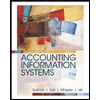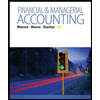
(a)&(b)
Method of Inventory
Inventory refers to the current assets that a company expects to sell during the normal course of business operations, the goods that are under process to be completed for future sale, or currently used for producing goods to be sold in the market. Inventory is valued under three methods:
FIFO
Under this inventory method, the units that are purchased first, are sold first. Thus, it starts from the selling of the beginning inventory, followed by the units purchased in a chronological order of their purchases took place during a particular period.
LIFO
Under this inventory method, the units that are purchased last, are sold first. Thus, it starts from the selling of the units recently purchased and ending with the beginning inventory.
Average cost method
Under this method, the cost of the goods available for sale is divided by the number of units available for sale during a particular period.
To Explain: the accounting treatment for a change in the inventory method for (a) not involving LIFO and (b) from the LIFO method.
(c)
To Explain: the accounting treatment for a change in the inventory method to the LIFO method.
Want to see the full answer?
Check out a sample textbook solution
Chapter 9 Solutions
INTERMEDIATE ACCOUNTING ACCESS 540 DAY
- Can you help me solve this financial accounting question using the correct financial procedures?arrow_forwardCan you explain the correct methodology to solve this general accounting problem?arrow_forwardI am searching for the correct answer to this financial accounting problem with proper accounting rules.arrow_forward
- Dormer Corporation has a forklift that is being sold after 3years of use. The current book value of the forklift is $7,200. If Dormer Corporation sells the forklift for $5,800, what is the impact of this transaction?arrow_forwardNeed answerarrow_forwardPlease explain the correct approach for solving this general accounting question.arrow_forward
- Can you help me solve this general accounting question using the correct accounting procedures?arrow_forwardwhat the cumulative net cash flow year1 for project 1 and project 2arrow_forwardAt the beginning of the year, Premier Manufacturing estimates the following manufacturing costs for the next period: direct labor, $720,000; direct materials, $425,000; and factory overhead, $324,000. 1. Compute its predetermined overhead rate as a percent of direct labor. 2. Compute its overhead cost as a percent of direct materials.arrow_forward
 Accounting Information SystemsFinanceISBN:9781337552127Author:Ulric J. Gelinas, Richard B. Dull, Patrick Wheeler, Mary Callahan HillPublisher:Cengage Learning
Accounting Information SystemsFinanceISBN:9781337552127Author:Ulric J. Gelinas, Richard B. Dull, Patrick Wheeler, Mary Callahan HillPublisher:Cengage Learning Individual Income TaxesAccountingISBN:9780357109731Author:HoffmanPublisher:CENGAGE LEARNING - CONSIGNMENT
Individual Income TaxesAccountingISBN:9780357109731Author:HoffmanPublisher:CENGAGE LEARNING - CONSIGNMENT Auditing: A Risk Based-Approach (MindTap Course L...AccountingISBN:9781337619455Author:Karla M Johnstone, Audrey A. Gramling, Larry E. RittenbergPublisher:Cengage Learning
Auditing: A Risk Based-Approach (MindTap Course L...AccountingISBN:9781337619455Author:Karla M Johnstone, Audrey A. Gramling, Larry E. RittenbergPublisher:Cengage Learning Cornerstones of Financial AccountingAccountingISBN:9781337690881Author:Jay Rich, Jeff JonesPublisher:Cengage Learning
Cornerstones of Financial AccountingAccountingISBN:9781337690881Author:Jay Rich, Jeff JonesPublisher:Cengage Learning Financial & Managerial AccountingAccountingISBN:9781285866307Author:Carl Warren, James M. Reeve, Jonathan DuchacPublisher:Cengage Learning
Financial & Managerial AccountingAccountingISBN:9781285866307Author:Carl Warren, James M. Reeve, Jonathan DuchacPublisher:Cengage Learning Corporate Financial AccountingAccountingISBN:9781305653535Author:Carl Warren, James M. Reeve, Jonathan DuchacPublisher:Cengage Learning
Corporate Financial AccountingAccountingISBN:9781305653535Author:Carl Warren, James M. Reeve, Jonathan DuchacPublisher:Cengage Learning





